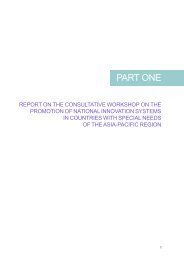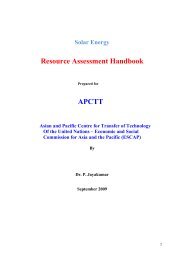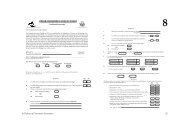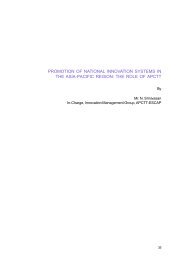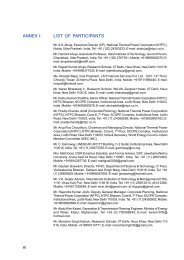Download Complete PDF - apctt
Download Complete PDF - apctt
Download Complete PDF - apctt
- No tags were found...
You also want an ePaper? Increase the reach of your titles
YUMPU automatically turns print PDFs into web optimized ePapers that Google loves.
Figure 3-10: Conversion efficiencies of technologiesConventionalpower from coalCombustionsub/super/ultra35-45%Power tohydrogen (20%) 7%Conversion(90%) to gasGas to power(45-57%) 40-52%Electricity-driventransport/fuel cell 36-46%Need for captureand sequestrationwould further makegasification-basedtechnologies moreattractiveGas to hydrogen Hydrogen storage/(80%) transport (90%) 50-58%Hydrogen-driventransport (50%) 32%Gas to liquids Liquid fuel-driven(45%) transport (IC) 95%IGCC+ technologiesDependence on import will be integral to India’s energy scenario, as requirement willoutstrip production (Figure 3-11). In the case of oil, it will be in excess of 90 per cent.Figure 3-11: Projected requirement and production of fuels in India900800700827Requirement (2031-32)Domestic productionQuantity (mtoe)600500400300560Converting coal to a liquid fuelcan help bridge this gap418200100351491000CoalPetroleumoilFuelsGas + coal-bedmethane97



